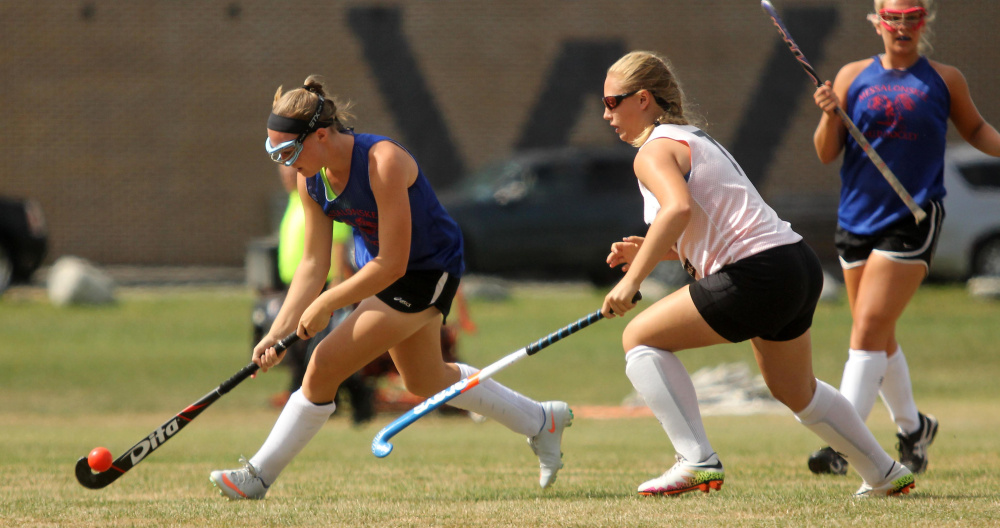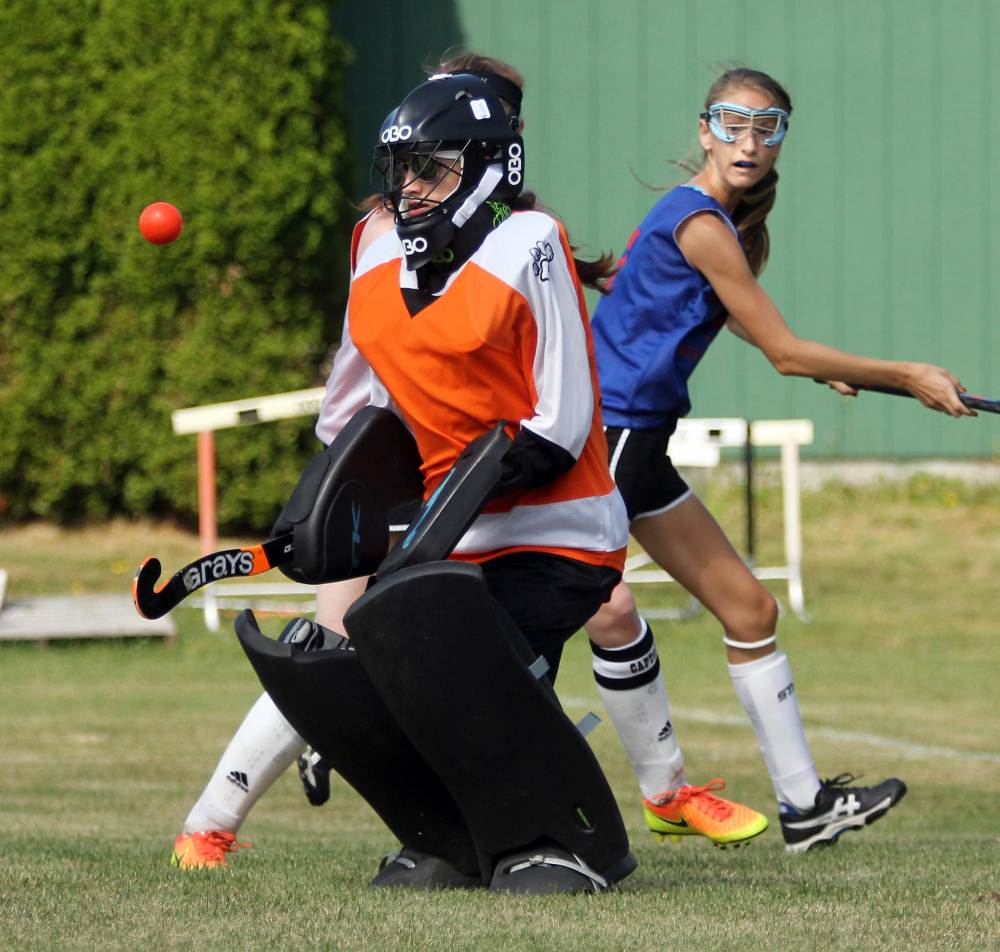Central Maine fans will get an opportunity to watch some of the best teams and players in the state as the high school field hockey season gets under way this week.
Just last fall, three central Maine teams reached state finals, with two winning championships. Perennial power Skowhegan won its 13th crown in the last 15 years, knocking off unbeaten Messalonskee in the process. Both teams return strong lineups and should contend again. In Class B, Winslow reached the state final with strong competition from Lawrence and Gardiner along the way, while in Class C Maine Central Institute claimed its first state championship.
Although fans appreciate their local teams, many only have a vague idea of what they’re watching. The sport is not so much complicated as it is nuanced and — the Olympics aside — it’s rarely seen or discussed on television.
“Field hockey is not so much a game of black and white as it is gray,” said one central Maine official.
“Like any other sport the object is to get the ball into the other team’s (goal),” said Gardiner coach Sharon Gallant, who conceded “it’s difficult to see what’s really going on.”
Gallant advises watching the officials to gain a better appreciation of the game. They monitor the action and blow their whistles or raise a hand above their head when a foul has occurred.
But what are they calling?
Two of the most common reasons for whistles are foot fouls and obstruction calls. A foot foul is called any time a player’s foot (with the exception of the goalie) touches the ball. The call results in a free hit for the other team and the ball can be put in play immediately. Should a team gain an advantage after a foul the referee will raise his or her hand and play will continue.
Obstruction is another commonly called foul. This can occur when an opposing player reaches for the ball and contacts the stick of another player. Players with the ball can be called for obstruction when they try to shield an opponent away with their body. Third party obstruction is difficult for both fans and sometimes even players to grasp. It occurs when a player runs between a teammate who has the ball and a defender’s path to the ball. Referees signal this call by crossing both arms in front of their chest.
High balls that are potentially dangerous are also commonly called. These occur most often on grass or bumpy fields where a hard shot bounces high toward an opposing player. The advent of more aerial passes in high school these days has complicated this issue a little but as long as opponents are more than five yards away these passes are generally allowed.
Should any of these calls or other fouls occur within the penalty circle, a penalty corner is awarded. These are good scoring opportunities since six of the players on defense are required to go to midfield while the offense puts the ball in play from the end line. The signal for a penalty corner is both arms horizontal toward the offending team’s goal.
Field hockey sticks are rounded on one side and the ball can only be played with the flat part of the stick. Sticks are all right handed and the left hand must be placed above the right when dribbling, shooting or passing.
A rule change this year eliminated the long hit, which was previously given to the offense when the defense hit the ball past the end line or the ball went out of bounds near the corner. The ball was put into play at the long hit line. This year the ball will be put into play at the 25-yard line facing the goal.
Send questions/comments to the editors.




Success. Please wait for the page to reload. If the page does not reload within 5 seconds, please refresh the page.
Enter your email and password to access comments.
Hi, to comment on stories you must . This profile is in addition to your subscription and website login.
Already have a commenting profile? .
Invalid username/password.
Please check your email to confirm and complete your registration.
Only subscribers are eligible to post comments. Please subscribe or login first for digital access. Here’s why.
Use the form below to reset your password. When you've submitted your account email, we will send an email with a reset code.